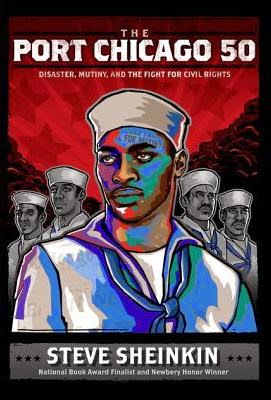This review contains affiliate links, which earn me a small commission when you click and purchase, at no extra cost to you. Thank you for supporting my small business and allowing me to continue providing you a reliable resource for clean book ratings.
During the summer of 1944, on a little-known port in the San Francisco Bay where Navy ships were loaded with ammunition, an enormous explosion happened: so large that it killed more than 300 men, the pier and the docked ship were obliterated, and men in the barracks were injured, some severely.
On its surface, it sounds like a horrible accident. Except for this fact: of the 320 men who were killed, 202 of them were African-American men who had signed up for the Navy and had been relegated to the dangerous job of loading the ammunition on the ship. The way the Navy worked in 1944 was that the white men got to serve on the ships; the black ones were segregated out and assigned the menial tasks the white sailors didn’t want.
The men who survived the blast were shuttled to a nearby port, and even though they were suffering trauma from the blast, they were ordered to go back to loading ammunition. Fifty sailors, reasonably, flat-out refused orders. So they were put on trial for mutiny. And convicted, even though there was never any plot to defy their superiors or take over the base. They just were tired of being treated differently than the white sailors and wanted to know why.
Some good came out of this: because the Secretary of the Navy was a (mostly) reasonable man (and because Eleanor Roosevelt got involved) the Navy (and soon after the rest of the military) was one of the first places in the country that was desegregated. Was the price of being convicted mutineers and spending 16 months in jail too high?
Steve Sheinkin doesn’t whitewash anything that happened during those months and years surrounding the Port Chicago 50 trial. He doesn’t impose judgment and lets the trial transcripts stand for themselves. Thurgood Marshall got involved, trying to get the government and the military to exonerate these men for being human. Sheinkin pointed out that this was the first event on the long path of the civil rights movement, which was something I didn’t know, and something we don’t often remember in history books.
This book is extremely well-written and as intriguing as Sheinkin’s other works. He’s a masterful history writer and knows just how to make things interesting and informative without being dry.
Rated: Moderate: There are some disturbing moments, not only violence, but also instances of racism. There are also about four censored f-bombs.
Click here to purchase your copy of The Port Chicago 50 on Amazon.




